A mix of materials used to ensure a solid seating experience never excludes steel and wood, which feature mass-scale indie productions requiring quite a sum of investments. Finally, at the end of last year, our largest-ever manufacturing center allowed indie cooperation of steel and wood productions to support front-end orders. It is estimated that about two-thirds of the sofas and four-fifths of chairs are either steel tube framed or based, even including bouncing up with steel zigzag springs and protecting the inner frame with the metal cover or button.
Yet, many more wood boards go to making the body of almost every sofa sectional, including plywood, bent plywood, and pine wood into backrests and seats, and no exception either with the wooden pads into the cushion base. We also apply alternatives to fewer priorities, such as iron bars forging into the sketch as a stylish metal meshback leisure chair. Additionally, we find aluminum alloy stretching out easily to be the mechanism and legs of swiveling office chairs to emphasize their flexibility.
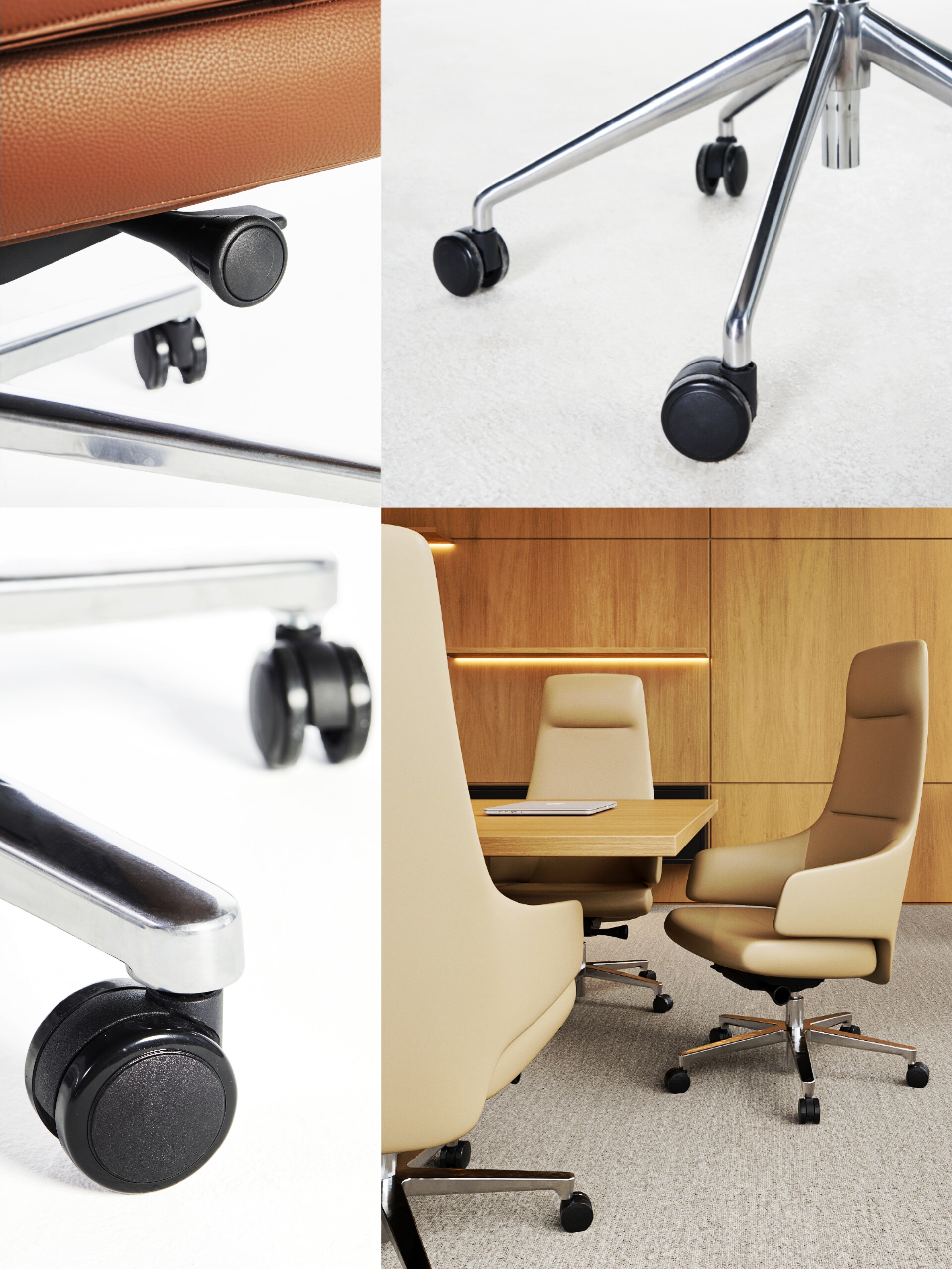
5-STAR AL ALLOY 5-STAR CASTOR CHAIR
But before the mixed use, we compared various types of woods and artifacts to study how they work as structural elements independently while contributing to the overall aesthetic and functionality of the design. Concerning the solid wood type, pine’s lightweight and affordability make it such a popular choice for the furniture frame, despite being prone to scratches and dents due to its soft nature. We therefore combine soft pine and tough plywood to create the strong frame of our impressive swell sofa.
.png)
SWELL SOFA SERIES_FRAME: PINE WOOD&PLYWOOD(GRADE E1)
However, given the natural fine grains and stylish texture of the beech woods, we keep its original look till the finish of the sheep chairs in clear water paint film for surface protection. The sturdy quality of both to withstand heavy use makes them ideal for making chair legs. However, when it comes to lower requirements on load-bearing capacities, such as seat back and tabletop production, the easy-to-curve bent plywood, as well as the heat, scratch, and moisture-proof MDF and MFC, are prioritized.
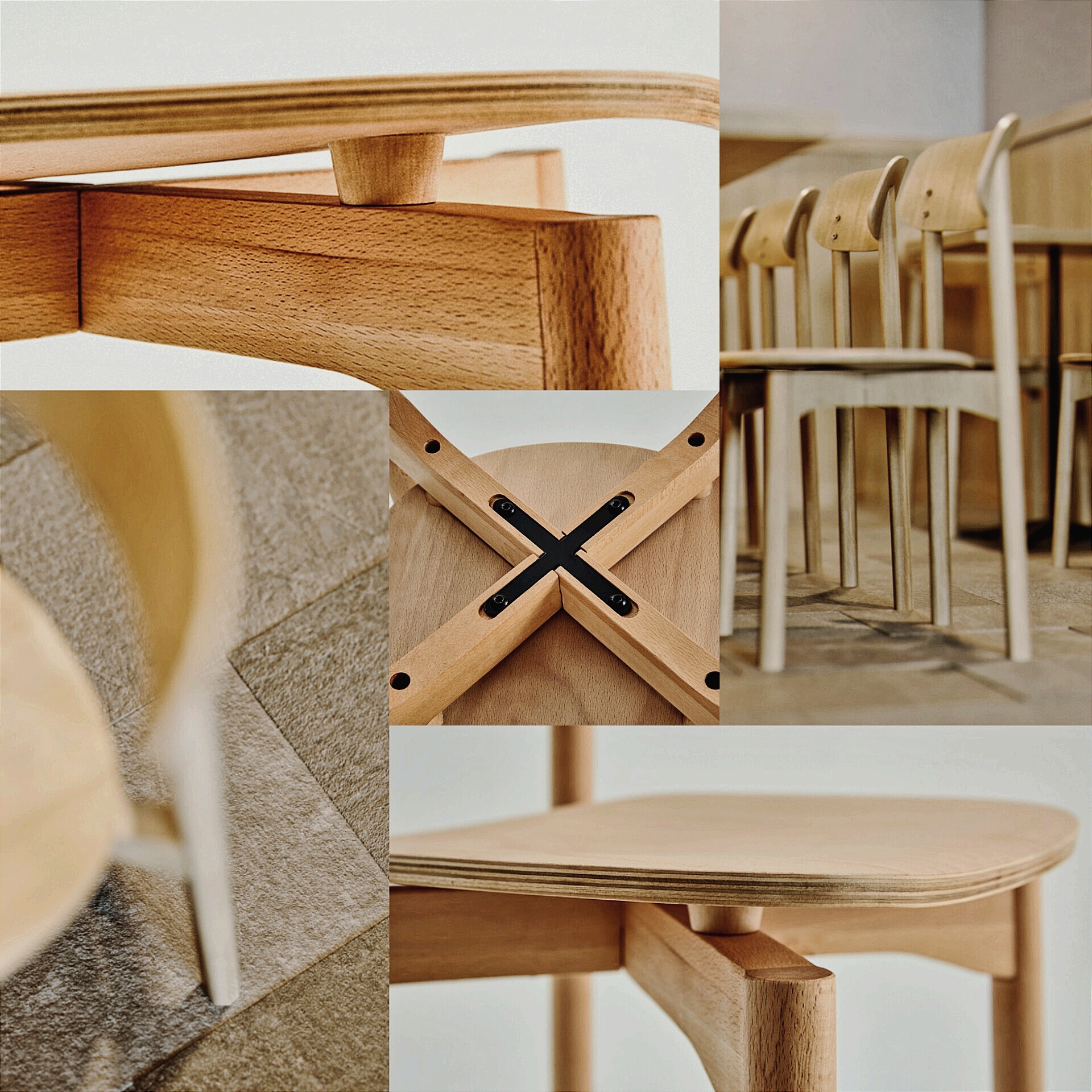
SHEEP CHAIR_LEG: BEECH WOOD&WATER PAINT FILM
The last but not the least, the walnut and oak veneer added as the top layer to these engineered wood products further offers an elegant finish reminiscent of solid wood texture, such as the pebble coffee table. The walnut, known for its rich and dark hues as well as the intricate grain patterns, exudes a high-end luxurious flair. The oak wood is hard to wear and tear, providing a timeless look with prominent grains for both traditional and contemporary designs. Technical proficiency improvement enables flexible coordination between resource use, smart manufacturing, and quality output.
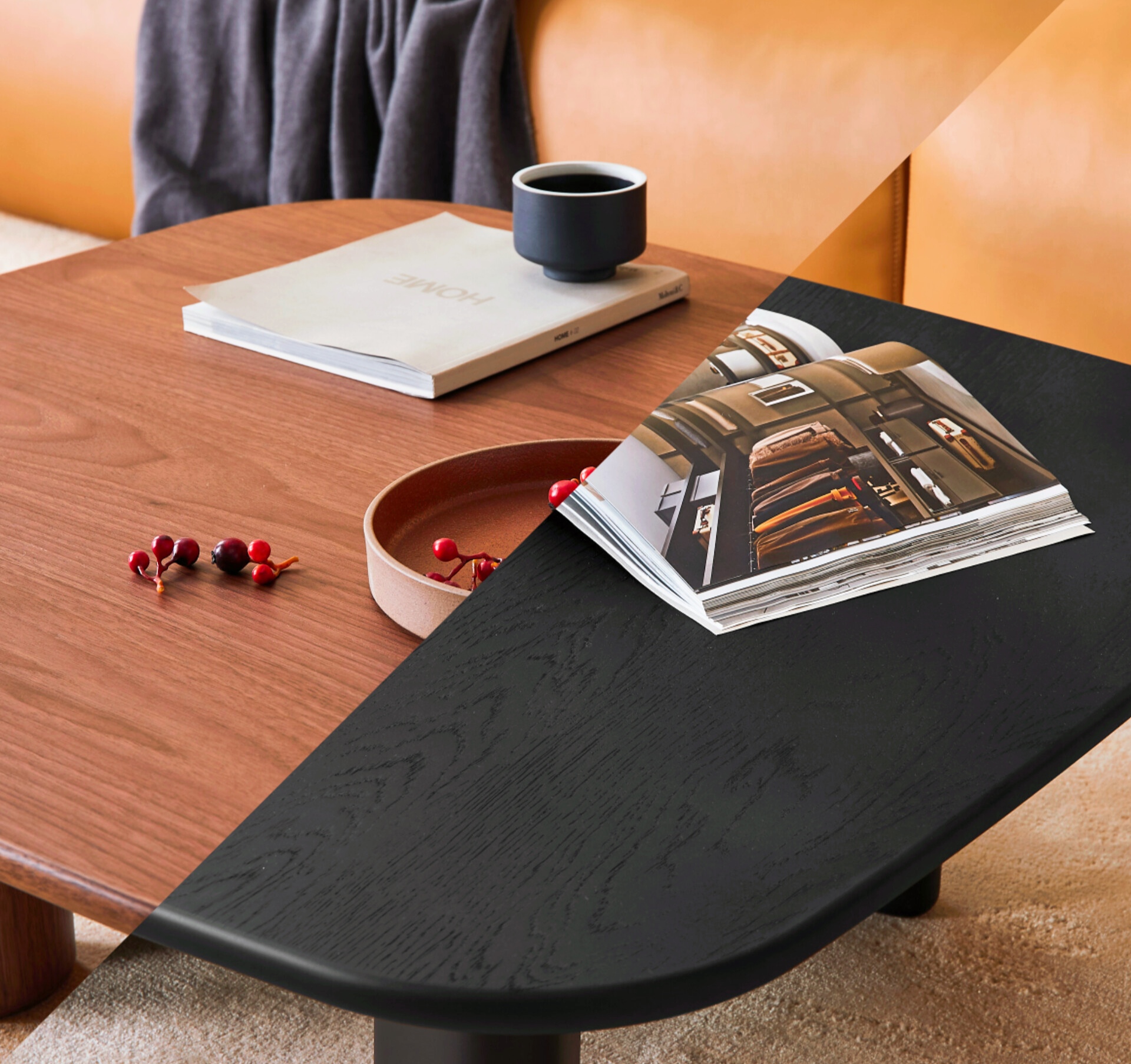
PEBBLE COFFEE TABLE_TOP: MDF(GRADE E1)_FINISH: WALNUT/OAK VENEER
STEEL V.S. WOOD
Metals are known for their impressive strength-to-weight ratio, providing excellent support and stability without excessive bulk. This strength makes metal an ideal choice for furniture that must endure substantial wear, such as in commercial settings or households with high foot traffic. When incorporated into the body frame, metal can create a robust foundation. Metal frames allow for sleek, modern designs that can contribute to minimalist aesthetics. The industrial look of exposed metal is increasingly popular in contemporary decor, where it can complement the warmth of upholstered surfaces, creating a dynamic contrast. Its versatility also enables furniture designers to explore innovative shapes and lines that might be difficult to achieve with wood alone. For example, a chair designed with a steel frame can feature thinner legs or supports, giving a lighter appearance without sacrificing stability. Even when used in minor roles, such as connectors and fasteners, metal plays a crucial role. Small metal connectors such as zigzag springs, can improve the ease of assembly and disassembly. Using metal can enhance the durability of joints compared to traditional wooden dowels or screws, which may degrade over time.
On the other hand, traditional wooden frames and joinery provide a different tactile and aesthetic experience. The natural warmth and grain patterns of wood can evoke a sense of comfort and coziness in spaces, which is particularly appealing in residential settings. Wood also allows for greater customization in terms of finish, paint, and stain, enabling more personalized home decor choices. However, wood may be less forgiving than metal in terms of structural support, particularly in designs requiring lighter frameworks or intricate shapes.
-
WOOD
SOLID WOOD-ONLY FURNITURE PRODUCTION PROCESS
Wood Drying → Woodworking (cutting materials, planing, mortising, etc.) → Sanding → Assembly → Painting → Packaging
PANEL-TYPE FURNITURE PRODUCTION PROCESS
Cutting Materials → Laminating (applying veneer to boards) → Edging → Sanding → Marquetry (Inlay Work) → Hot Pressing → Sanding → Sorting → Mortising → Puttying → Sanding → Painting → Assembly → Packaging
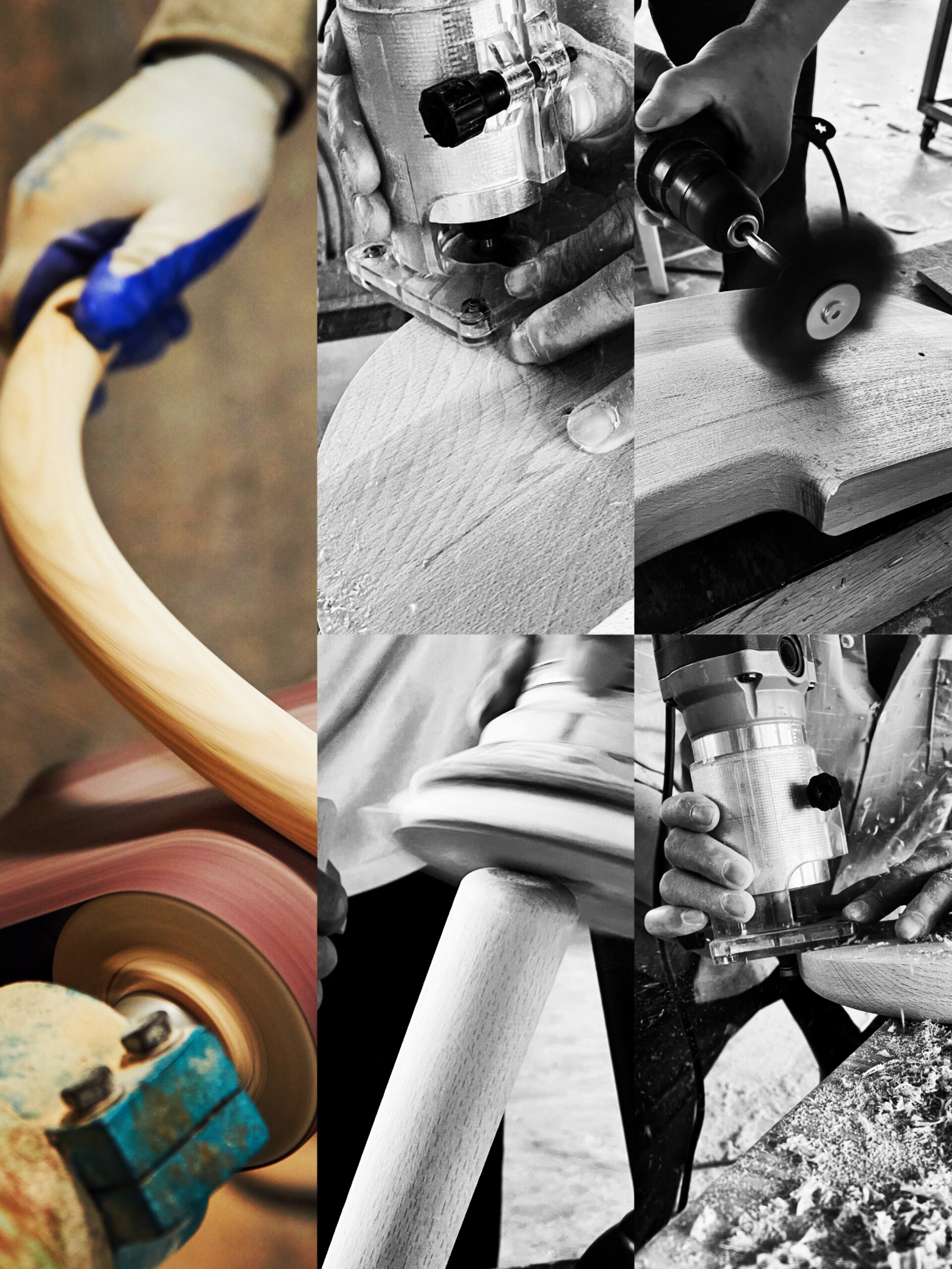
SANDING/MOLDING/SANDING/BRUSHING/MOLDING (L2R, T2B)
-
STEEL
STEEL FURNITURE PRODUCTION PROCESS
Cutting Tubes → Sanding → Bending → Welding → Surface Treatment (plating, baking paint, spraying paint) → Assembly → Packaging
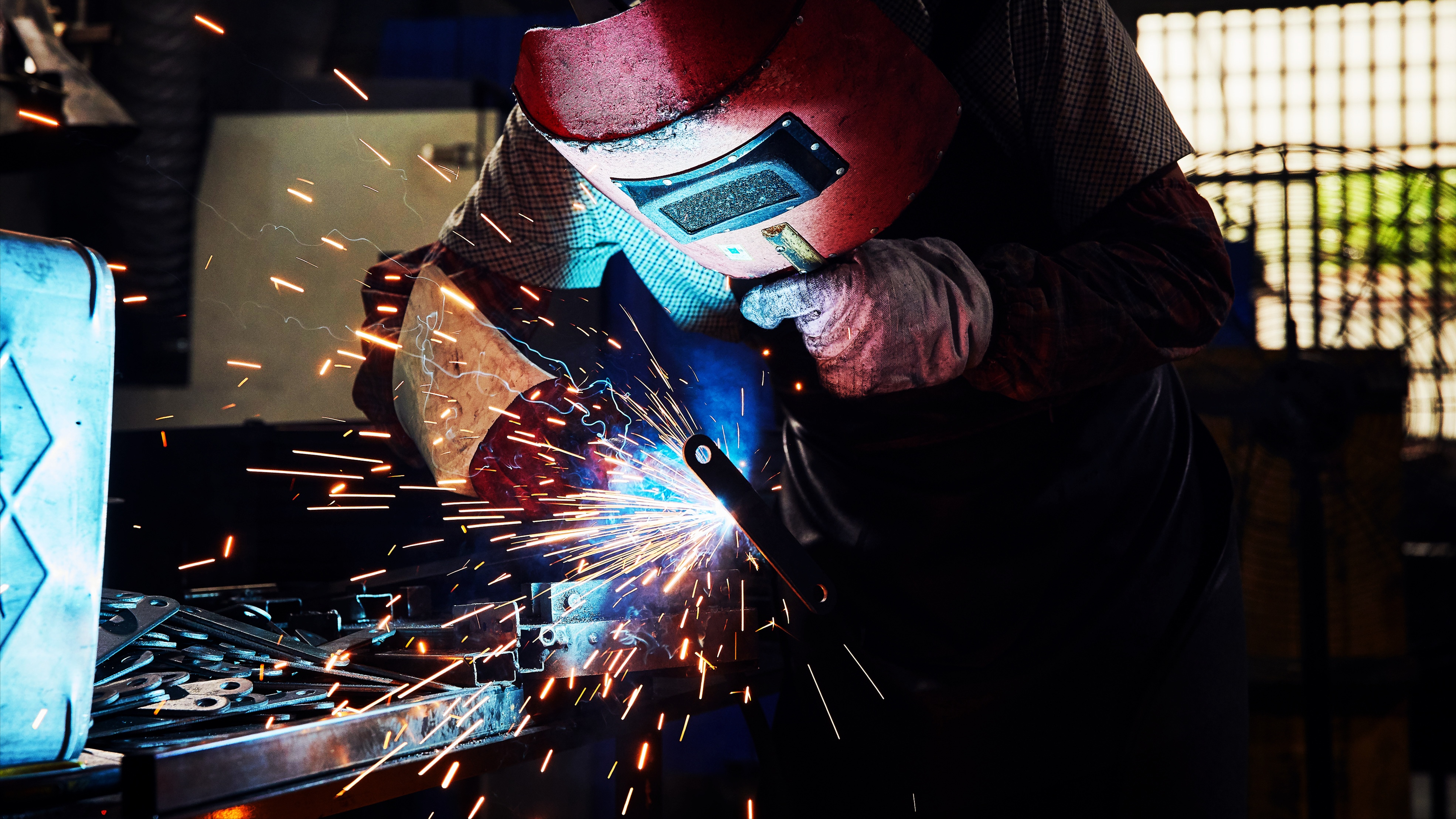
WELDING
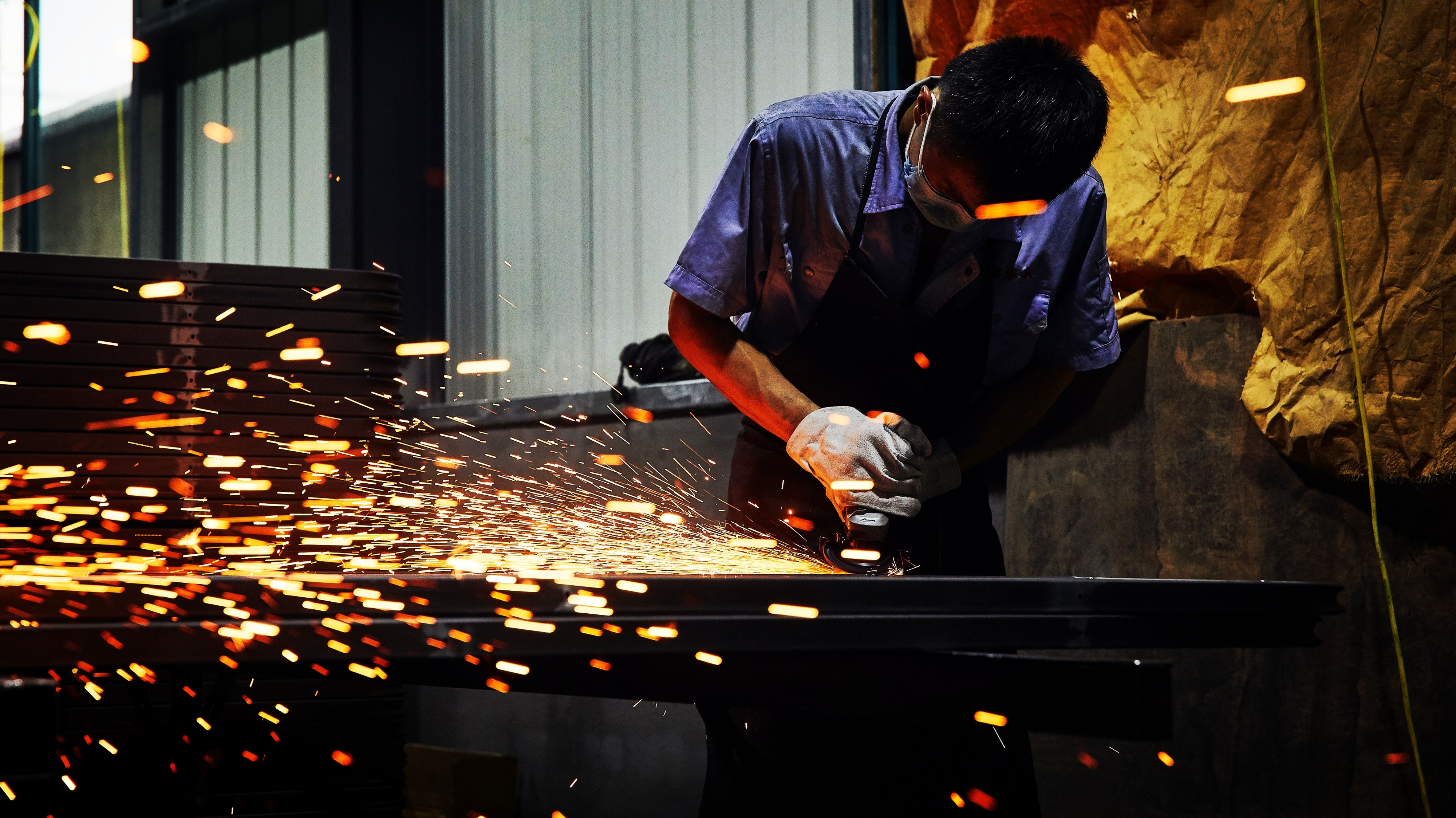
SANDING
Designers Introduction